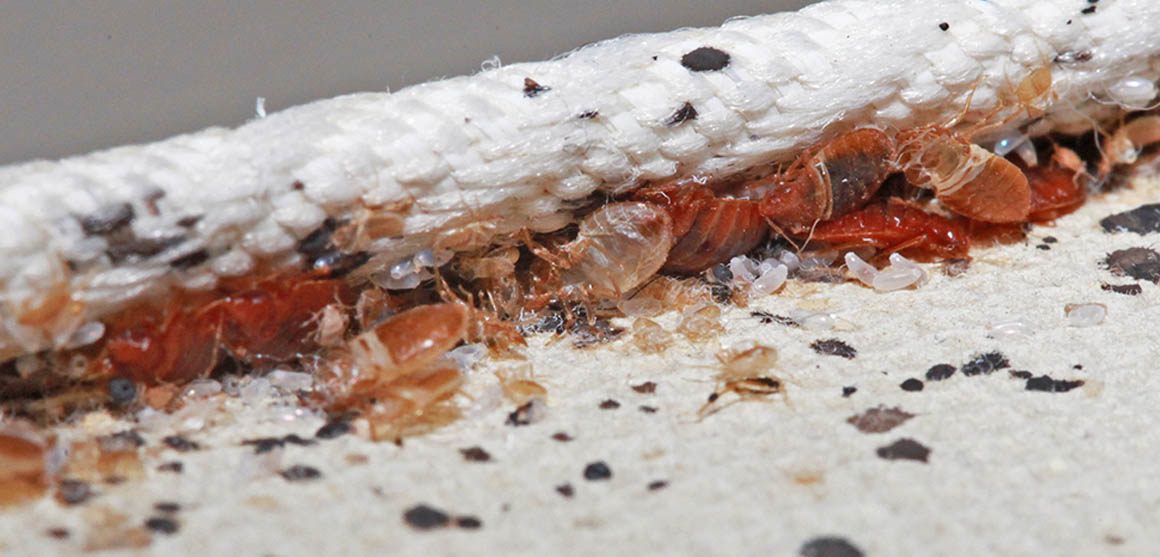
Egg
The eggs are fertilised in the ovaries, and some development takes place before laying. The female must have a blood meal before oviposition can occur. The female lays the egg on rough rather than smooth surfaces, inserting them into cracks and crevices. They are cemented in place, and can be found individually or in small batches. Typically, a female bed bug will lay up to 15 eggs per meal, about 3 eggs per day for 6 months, feeding every 3-4 days.
When food becomes scarce, egg laying ceases. The eggs are white, ovoid, and about 1mm in length. The minimum time for development is 4-5 days at 30-35oC, moving up to 40 days at 14oC. No eggs hatch above 37oC or at temperatures below 13oC.
Nymphs
The egg has a cap which is forced off by the first instar nymph. This nymph is pale yellow with red eyes, and is about 1.5mm long. It feeds within 24hrs of emergence and also within 24hrs of molting to the next instar or to adulthood.
Nymphal development to adulthood takes from 10 days to three months depending on the temperature, typically three weeks at 30oC. There are five nymphal instars, each stage increasing 30-40% in size and weight, and getting darker with each stage.
Adults and Behaviour
Bed bugs are nocturnal creatures, reaching a peak of activity just before dawn. They are negatively photo-tactic and positively thigmotaxic, which is to say they shy away from light and like to hide in cracks and crevices. In their search for hosts they respond to warmth and carbon dioxide, detecting gradients of both from up to 1.5metres away.
They also produce an aggregating pheromone which adults and 5th instar nymphs respond to well, helping to keep them together in their daytime hiding places. The odour associated with bed bugs is produced by adults and nymphs from the stink gland at the rear of the thorax, on the underside, and is used as an alarm signal, so frightened bed bugs smell worse than contented and happy ones.
Bed bugs have sucking-piercing mouth parts with which they attach themselves to the host, also grabbing on with their front legs, and inject in a blood clotting agent so that the blood does not clot until it reaches the inner part of the gut. A feed takes 5-10 minutes during which time the insect usually defecates, leaving a nice stain on the bed sheets or hosts clothing. Bed bugs can go hungry, surviving up to a year if the temperature remains low, but even inside they can go for 6 months without food.

Call 029 2099 0115 today to arrange a free no obligation survey of your bird or pest control infestation.